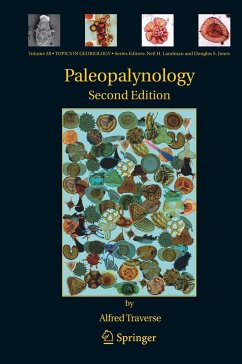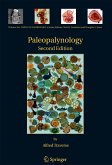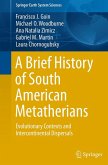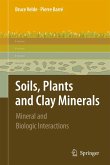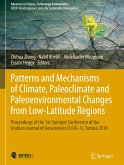Paleopalynology, second edition, provides profusely illustrated treatment of fossil palynomorphs, including spores, pollen, dinoflagellate cysts, acritarchs, chitinozoans, scolecodonts, and various microscopic fungal and algal dispersal bodies. The book serves both as a student text and general reference work. Palynomorphs yield information about age, geological and biological environment, climate during deposition, and other significant factors about the enclosing rocks.
Extant spores and pollen are treated first, preparing the student for more difficult work with fossil sporomorphs and other kinds of palynomorphs. Recognizing that palynomorphs occur together in rocks because of chemical robustness and stratigraphic distribution, not biological relationship, the central sections are organized stratigraphically. Among many other topics presented are the sedimentation and geothermal alteration of palynomorphs, and palynofacies analysis. An appendix describes laboratory methods. The glossary, bibliographies and index are useful tools for study of the literature.
Extant spores and pollen are treated first, preparing the student for more difficult work with fossil sporomorphs and other kinds of palynomorphs. Recognizing that palynomorphs occur together in rocks because of chemical robustness and stratigraphic distribution, not biological relationship, the central sections are organized stratigraphically. Among many other topics presented are the sedimentation and geothermal alteration of palynomorphs, and palynofacies analysis. An appendix describes laboratory methods. The glossary, bibliographies and index are useful tools for study of the literature.
From the reviews of the second edition:
"Paleopalynology, second edition, provides profusely illustrated treatment of fossil palynomorphs, including spores, pollen, dinoflagellate cysts, acritarchs, chitinozoans, scolecodonts, and various microscopic fungal and algal dispersal bodies. The book serves both as a student text and general reference work. Palynomorphs yield information about age, geological and biological environment, climate during deposition, and other significant factors about the enclosing rocks. Extant spores and pollen are treated first, preparing the student for more difficult work with fossil sporomorphs and other kinds of palynomorphs. Recognizing that palynomorphs occur together in rocks because of chemical robustness and stratigraphic distribution, not biological relationship, the central sections are organized stratigraphically. Among many other topics presented are the sedimentation and geothermal alteration of palynomorphs, and palynofacies analysis. An appendix describes laboratory methods. The glossary, bibliographies and index are useful tools for study of the literature." American Association of Stratigraphic Palynologists, Newsletter September 2007, Volume 40, Number 3.
"This book, like the first edition, succeeds admirably and will be a necessary addition to any pollen laboratory. The book could be used as an introductory textbook in a course in geological palynology, but it is also a reference that would be of use in pollen labs or for people needing an introduction to this literature". Review published in EOS, Vol. 89, No. 11, 11 March 2008, written by Konrad Gajewski, Lab. for Paleoclimatology and Climatology, Dept. of Geography, Univ. of Ottowa, Canada.
"Paleopalynology defines this subdiscipline of paleontology in a single concise volume. ... The bibliography, glossary, and index are comprehensive, all of which contributes to the utility of thiswork as a stand-alone manual of paleopalynology. ... it is possible, with this book in hand, to gain the basics needed to do research on fossil pollen and spores. This work belongs in all libraries that profess to include the natural sciences. Summing Up: Essential. All levels." P. K. Strother, CHOICE, Vol. 45 (8), 2008.
"The book has been thoroughly updated with contemporary references, some new topics, a variety of new ideas, and some old conundrums resolved. ... The second edition of Paleopalynology adds new data on the sedimentation and taphonomy of palynomorphs and extracts key concepts from the 1994 volume to give the reader a concise and practical overview ... for a variety of geological questions. ... an invaluable reference for working scientists and a comprehensive text for students. ... Certainly this is an invaluable scientific contribution.", Nan Crystal Arens, American Paleontologist, Vol. 17 (1), Spring 2009.
"This book is a valuable asset to paleopalynology and highlights its importance as a microplaleontological discipline. ... This book will serve as a useful reference for palynologists and nonpalynologists, and for professionals and students ... .", Francisca E. Oboh-Ikuenobe, Palaios Society for Sedimentary Geology, June, 2009.
"Paleopalynology, second edition, provides profusely illustrated treatment of fossil palynomorphs, including spores, pollen, dinoflagellate cysts, acritarchs, chitinozoans, scolecodonts, and various microscopic fungal and algal dispersal bodies. The book serves both as a student text and general reference work. Palynomorphs yield information about age, geological and biological environment, climate during deposition, and other significant factors about the enclosing rocks. Extant spores and pollen are treated first, preparing the student for more difficult work with fossil sporomorphs and other kinds of palynomorphs. Recognizing that palynomorphs occur together in rocks because of chemical robustness and stratigraphic distribution, not biological relationship, the central sections are organized stratigraphically. Among many other topics presented are the sedimentation and geothermal alteration of palynomorphs, and palynofacies analysis. An appendix describes laboratory methods. The glossary, bibliographies and index are useful tools for study of the literature." American Association of Stratigraphic Palynologists, Newsletter September 2007, Volume 40, Number 3.
"This book, like the first edition, succeeds admirably and will be a necessary addition to any pollen laboratory. The book could be used as an introductory textbook in a course in geological palynology, but it is also a reference that would be of use in pollen labs or for people needing an introduction to this literature". Review published in EOS, Vol. 89, No. 11, 11 March 2008, written by Konrad Gajewski, Lab. for Paleoclimatology and Climatology, Dept. of Geography, Univ. of Ottowa, Canada.
"Paleopalynology defines this subdiscipline of paleontology in a single concise volume. ... The bibliography, glossary, and index are comprehensive, all of which contributes to the utility of thiswork as a stand-alone manual of paleopalynology. ... it is possible, with this book in hand, to gain the basics needed to do research on fossil pollen and spores. This work belongs in all libraries that profess to include the natural sciences. Summing Up: Essential. All levels." P. K. Strother, CHOICE, Vol. 45 (8), 2008.
"The book has been thoroughly updated with contemporary references, some new topics, a variety of new ideas, and some old conundrums resolved. ... The second edition of Paleopalynology adds new data on the sedimentation and taphonomy of palynomorphs and extracts key concepts from the 1994 volume to give the reader a concise and practical overview ... for a variety of geological questions. ... an invaluable reference for working scientists and a comprehensive text for students. ... Certainly this is an invaluable scientific contribution.", Nan Crystal Arens, American Paleontologist, Vol. 17 (1), Spring 2009.
"This book is a valuable asset to paleopalynology and highlights its importance as a microplaleontological discipline. ... This book will serve as a useful reference for palynologists and nonpalynologists, and for professionals and students ... .", Francisca E. Oboh-Ikuenobe, Palaios Society for Sedimentary Geology, June, 2009.

